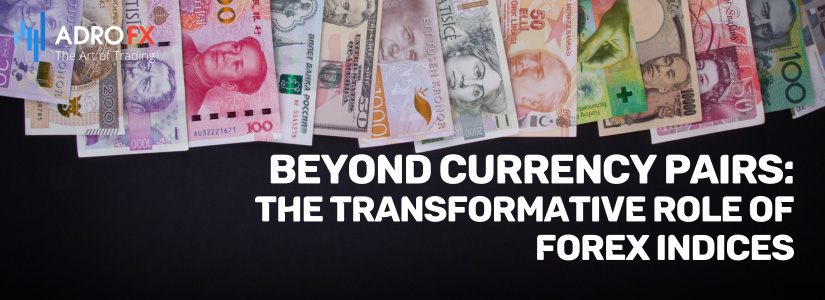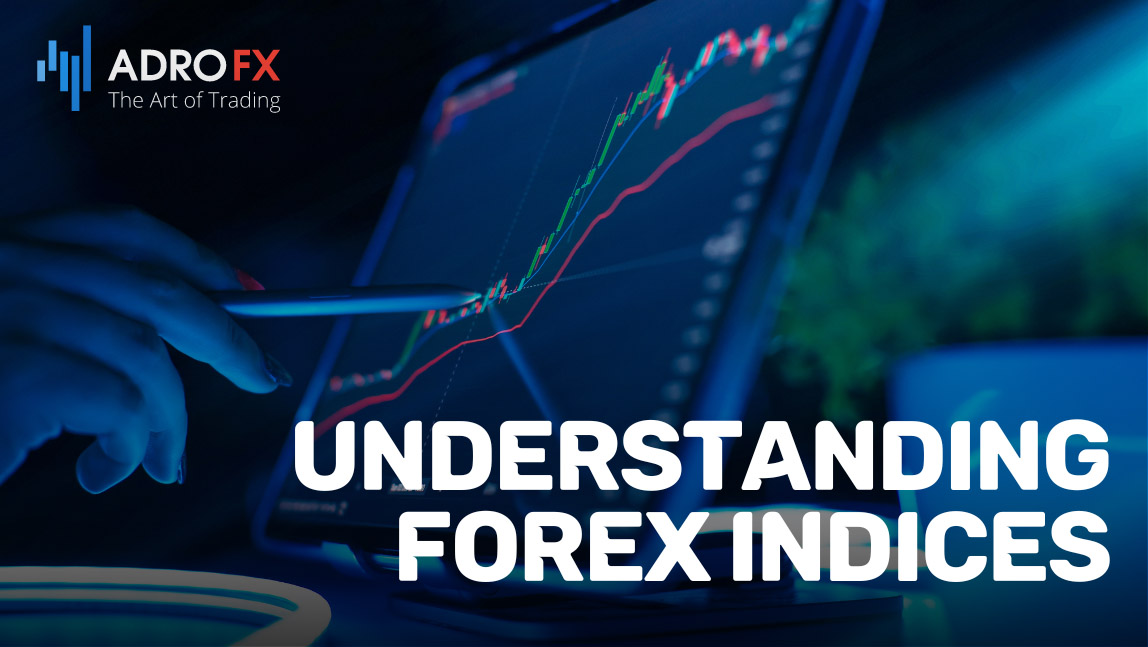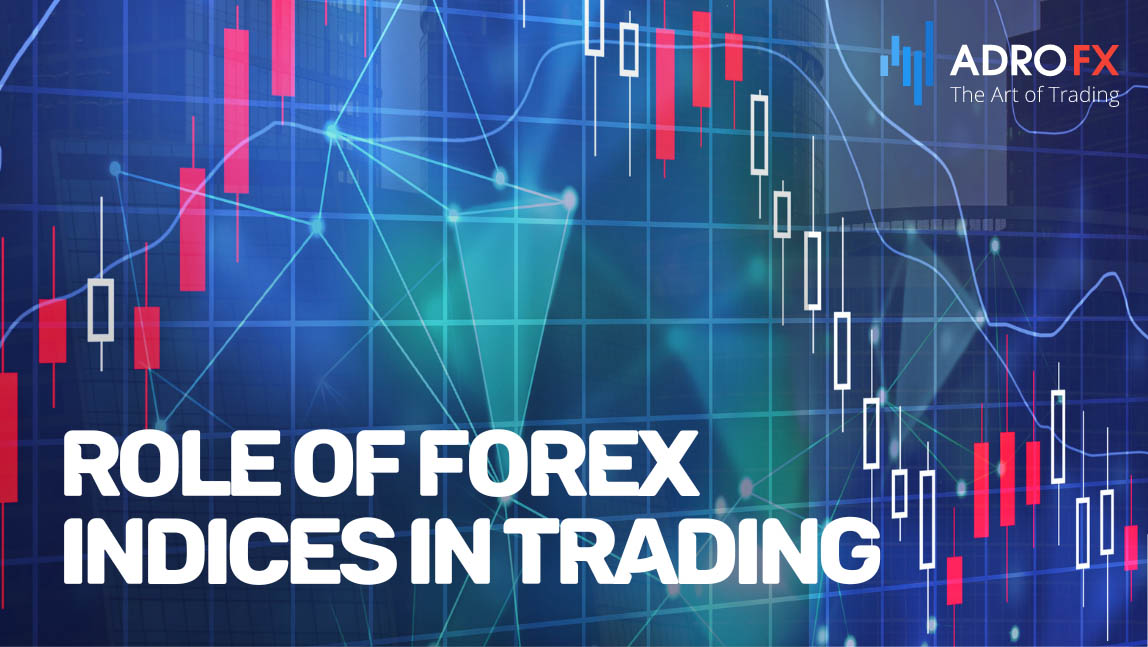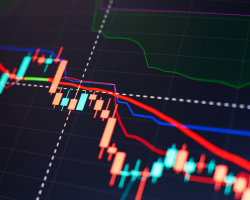Beyond Currency Pairs: The Transformative Role of Forex Indices

The dynamic world of forex trading demands traders to stay ahead and make informed decisions. Forex indices stand out as indispensable tools in technical analysis, rooted in the study of historical price data. They serve as potent indicators, enabling traders to pinpoint entry and exit points, identify trends, and manage risk with precision. Delving into their integration into analytical frameworks, this article emphasizes the transformative role of forex indices. Beyond indicators, they become instrumental for diversification and risk management, offering traders a nuanced understanding of market dynamics.
Exploring the definition, computation, and components of forex indices, the article draws parallels with stock market indices. Understanding their role in trading is crucial, from benchmarking currency performance to influencing macroeconomic analyses. Forex indices act as reflective indicators of global economic trends, shaping various trading strategies. Subsequent sections provide insights on unlocking trading opportunities, employing effective strategies, and addressing the balanced perspective of their advantages and limitations. The goal is to empower traders in the competitive forex market with actionable insights and a comprehensive understanding of forex indices.

Understanding Forex Indices
Forex indices stand as indispensable tools in the realm of technical analysis, a methodology rooted in studying historical price data and patterns to predict future price fluctuations. Traders leverage forex indices as potent indicators, enabling them to identify trends, pinpoint support and resistance levels, and determine potential entry and exit points with greater precision.
The integration of forex indices into analytical frameworks equips traders with a nuanced understanding of market dynamics, elevating the efficacy of their trading strategies. Beyond serving as mere indicators, forex indices also emerge as valuable instruments for diversification and risk management, offering a broader perspective than individual currency pairs.
Rather than fixating solely on specific currency pairs, traders hold the power of forex indices to assess the overall strength or weakness of a currency. This panoramic viewpoint empowers traders to diversify their portfolios strategically, mitigating risk exposure and harmonizing potential losses from one currency pair with gains from others.
Definition and Computation
Forex indices, also referred to as currency indices or forex baskets, represent statistical measures gauging the relative strength or weakness of a particular currency against a basket of others. These indices distill complex market dynamics into a singular value, encapsulating the comprehensive performance of a currency compared to its counterparts. The calculation of forex indices involves aggregating exchange rates of selected currencies and applying a weighted system that mirrors their respective significance.
Components and Weightings
The composition of a forex index hinges on the index's purpose and methodology. Major currency indices typically encompass currencies like the US dollar, euro, Japanese yen, British pound, and Swiss franc. The allocation of weightings to each currency within the index is determined by factors such as trade volumes, economic importance, and market liquidity.
Drawing a parallel to stock market indices, which play a pivotal role in equities trading, forex indices provide a similar snapshot but in the currency market. Traders engaging in index trading benefit from the movements of these indices, analogous to trading the Dow Jones Industrial Average or the Frankfurt Stock Exchange Index in the stock market.
Trading forex indices allows investors to access a diversified portfolio without the complexity of individual stock trading. The appeal lies in the liquidity and market capitalization of the most traded indices, making them attractive to traders. Additionally, traders can partake in index futures, which are contracts tied to the anticipated future value of a stock index.
Major stock exchanges, exemplified by the Tokyo Stock Exchange, serve as hubs for trading stock indices. These exchanges present numerous opportunities for market participants keen on exploring the world of stock index trading, offering both cash indices and index futures for a diverse and dynamic trading experience.

Role Of Forex Indices In Trading
Forex indices play a crucial role in trading by providing a comprehensive measure of the performance of a group of currencies against a base currency. These indices are designed to reflect the overall strength or weakness of a particular currency compared to others in the basket. Here are some key aspects of the role of forex indices in trading:
- Benchmarking Currency Performance
Forex indices serve as benchmarks to measure the performance of a currency against a basket of other currencies. Traders and investors use these benchmarks to assess the relative strength or weakness of a currency.
- Diversification
Forex indices allow traders to diversify their exposure across multiple currencies. Instead of focusing on a single currency pair, traders can gain exposure to a broader market by trading forex indices, spreading risk, and potentially enhancing returns.
- Macroeconomic Analysis
Forex indices are often influenced by macroeconomic factors, such as interest rates, economic growth, inflation, and geopolitical events. Traders use these indices to analyze the overall health of economies and make informed decisions based on broader economic trends.
- Hedging
Traders and investors can use forex indices as a tool for hedging currency risk. For example, if a company has exposure to multiple currencies, it may use forex indices to hedge against adverse currency movements.
- Trading Strategies
Forex indices can be used as the basis for trading strategies. Traders may look for trends or reversals in the index to inform their trading decisions. Additionally, technical analysis and chart patterns can be applied to forex indices.
- Market Sentiment
Forex indices can provide insights into market sentiment. A rising index may indicate overall bullishness for the base currency, while a falling index may suggest weakness. Traders often use sentiment analysis to gauge potential market movements.
- Global Economic Indicators
Changes in forex indices can be reflective of global economic trends. For example, a strengthening or weakening of a major currency index may be tied to broader economic shifts, such as changes in global trade balances or monetary policy.
- Investment Products
Financial products, such as exchange-traded funds (ETFs) and other investment vehicles, are often based on forex indices. These products provide investors with the opportunity to gain exposure to a diversified basket of currencies.
In a nutshel, forex indices are beneficial means in the currency trading market. They offer a broader perspective on currency movements, allowing traders and investors to make more informed decisions based on a comprehensive view of currency performance.

Strategies and Insights with Forex Indices
Forex indices are indispensable tools for traders, providing a gateway to uncover potential trading opportunities. Divergences between currency pairs and their corresponding forex indices can signal market inefficiencies, creating openings for profitable trades. Traders can enhance their strategies by integrating forex index analysis, pinpointing optimal entry and exit points, identifying trend reversals, and executing correlation-based approaches.
For instance, notable deviations between a currency pair and its forex index may indicate a mispricing, offering traders the chance to capitalize on anticipated corrections toward the forex index.
Diligent monitoring of correlations between currency pairs and forex indices allows traders to exploit trends and relationships among currencies. Leveraging insights from forex indices empowers traders to craft robust strategies, enhancing overall trading outcomes. Recognizing currency trends, diversifying portfolios, evaluating trades against benchmarks, and capitalizing on trading opportunities establish forex indices as indispensable tools for navigating the dynamic and competitive forex market. In summary, forex indices play a pivotal role in trading strategies, providing valuable insights into currency movements, market trends, and lucrative opportunities.
Advantages And Limitations Of Forex Indices
Forex indices serve as invaluable instruments, offering traders critical insights into currency movements, market trends, and potential trading opportunities. Nevertheless, akin to any trading tool, forex indices come with their own set of advantages and limitations.
Grasping these factors is imperative for traders aiming to harness the full potential of forex indices within their trading strategies.
Forex indices provide traders with valuable insights into currency movements, market trends, and trading opportunities. They offer a broad perspective on a currency's strength or weakness by measuring it against a basket of other currencies, facilitating a comprehensive view of market dynamics. Traders can leverage forex indices for portfolio diversification, reducing risk exposure to individual currency pairs and enhancing overall stability. These indices aid in identifying trends within the currency market, allowing traders to make informed decisions about potential future price movements.
Furthermore, forex indices serve as benchmarks for evaluating the performance of individual currency pairs, enabling traders to assess the effectiveness of their trading strategies. Incorporating forex indices into trading strategies also contributes to effective risk management, as traders can assess the associated risks with specific currency pairs by considering the broader market perspective provided by the indices. Additionally, forex indices facilitate correlation analysis between different currency pairs, aiding in the implementation of correlation-based trading strategies and informed decisions regarding portfolio diversification.
Despite these advantages, it's crucial to acknowledge the limitations of forex indices. Their simplicity and generalization may overlook specific nuances in individual currency movements, potentially impacting accuracy. Issues related to the composition and weighting of currencies can influence the index's ability to accurately reflect market conditions, particularly with an overemphasis on major currencies. Forex indices may not capture all currency-specific factors influencing exchange rates, necessitating complementary fundamental and technical analysis. Additionally, the periodic calculation of indices may result in a lack of real-time information, potentially causing traders to miss immediate market developments.
Furthermore, some indices may overemphasize major currencies, neglecting smaller or emerging market currencies and limiting their effectiveness in capturing global market trends. Correlation breakdowns can occur, especially during rapid market changes or unexpected events, deviating from historical patterns.
In conclusion, while forex indices offer valuable insights and advantages for traders, a comprehensive analysis that considers other factors is essential. Recognizing and understanding these limitations ensures that traders make well-informed decisions when incorporating forex indices into their trading strategies.
Summary
In conclusion, forex indices play a transformative role in the dynamic landscape of currency trading. Rooted in technical analysis, these tools provide traders with invaluable insights into market trends, enabling them to diversify portfolios strategically and navigate risks. Beyond mere indicators, forex indices influence macroeconomic analyses and serve as benchmarks for currency performance.
The article explores the intricacies of forex indices, covering their definition, computation, and parallels with stock market indices. Traders, akin to stock market participants, can capitalize on index movements for diversified and dynamic trading experiences.
Unlocking trading opportunities and effective strategies, the article emphasizes the importance of leveraging forex indices. By identifying trends, spotting mispricings, and employing correlation-based approaches, traders enhance overall outcomes. The article also highlights the advantages and limitations of forex indices, urging a balanced perspective.
In essence, forex indices are transformative instruments, empowering traders with insights, strategies, and opportunities. Recognizing their role in comprehensive decision-making, traders can confidently navigate the competitive forex market, maximizing success while acknowledging and mitigating potential limitations.
About AdroFx
Established in 2018, AdroFx is known for its high technology and its ability to deliver high-quality brokerage services in more than 200 countries around the world. AdroFx makes every effort to keep its customers satisfied and to meet all the trading needs of any trader. With the five types of trading accounts, we have all it takes to fit any traders` needs and styles. The company provides access to 115+ trading instruments, including currencies, metals, stocks, and cryptocurrencies, which make it possible to make the most out of trading on the financial markets. Considering all the above, AdroFx is the perfect variant for anyone who doesn't settle for less than the best.










